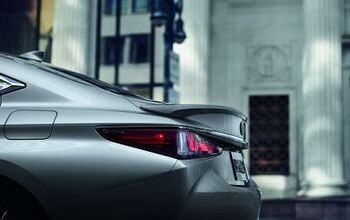Prototype No More: 2019 Honda Insight Prepares to Wade Back Into the Hybrid Fray

Honda’s remarkably fleshed-out Insight prototype has now emerged in production form, looking remarkably like the prototype. Go figure, that.
With the 2019 Insight now positioned between the compact Civic, from which it borrows a platform, and the midsize Accord, Honda wants to tempt green car buyers with an upscale appearance (and experience) they can’t find in the Toyota Prius line. If Honda’s estimate pans out, the sedan will boast better city fuel economy than the stalwart Prius.
The Environmental Protection agency hasn’t yet rated the third-generation Insight, but Honda pegs its city consumption at 55 miles per gallon. That’s 1 mpg more than a stock Prius. (The Eco variant tops its thirstier Prius sibling by 4 mpg on both the city and combined cycle.)
When it rolled out the prototype in January, Honda said it was aiming for a 50 mph combined rating. The Prius gets 52 mpg combined. We’ll have to wait and see which car wins this eco cage match.
But fuel economy isn’t the whole reason for the Insight’s existence. If it was, Honda could have just reverted back to the two-seat teardrop shape that tempted buyers at the turn of the century. Apparently, it’s easier to sell upmarket hybrid cars these days; thus, the new Insight boasts a well fleshed out list of standard and available features, plus what Honda claims is the largest backseat in the segment. Rear legroom is 37.4 inches, and the trunk offers up 15.1 cubic inch of cargo volume.
Buyers can choose from LX, EX, and Touring models, with the top-tier trim offering all the goodies you’d expect from a near-luxury vehicle. 17-inch wheels come standard on that trim, along with dual-zone climate control, satellite navigation, perforated leather, heated front seats, 10-speaker audio, HondaLink subscription service and HomeLink remote system. All Insight models arrive with a long list of driver assist features, including automatic emergency braking, pre-collision warning, lane keeping, and adaptive cruise control.
The Insight’s generous dimensions are the result of careful packaging of its two-motor hybrid powertrain. A lithium-ion battery lies beneath the rear seat, keeping the trunk floor where it ought to be. Up front, a 1.5-liter Atkinson-cycle four-cylinder and electric propulsion motor makes a combined 151 horsepower and 197 lb-ft of torque, with the gasoline engine acting as a generator most of the time. The dominant electric motor draws current from a continuously refilled battery or straight from the engine/generator, meaning the Insight operates as a series hybrid. A conventional automatic or continuously variable transmission isn’t needed with this setup.
With the electric motor directly powering the front wheels, the only mechanical intervention comes at highway speeds, when a lockup clutch connects the gasoline engine to the axle shafts.
So, how much will the Insight cost? We don’t know yet, but Honda will no doubt make sure it doesn’t tread on the Accord Hybrid’s toes. The 2019 Insight, scheduled for a March 28th debut at the New York International Auto Show, starts production at Honda’s Marysville, Ohio assembly plant later this year.
[Images: Honda]

More by Steph Willems
Latest Car Reviews
Read moreLatest Product Reviews
Read moreRecent Comments
- Buickman some stores may have still had some carbon paper on hand?
- Zerofoo I would rather that car companies put the correct engine in the car to start. The "base" engine is almost always there for rental car fodder. Simplifying drivetrains would go a long way to reducing costs. If you want a smaller engine, buy a smaller car. The trend of putting small highly-stressed engines in big cars sucks. Hybrid drivetrains are even worse - complex, heavy, and certain to cause future high repair bills. All for a few MPG. Finally, to hell with CAFE standards. Just divide the fines among all the units you sell and get some lobbyists to get rid of the standards the Federal Government has no constitutional right to set anyway.
- Master Baiter But, is the EX30 as glitchy as Joe Biden on a debate stage?
- Master Baiter We're a long way from the days when, if you had compression, fuel and spark, the car would get you from point A to point B. Now, cue the Captain Obvious NPCs who are going to tell me, "modern cars are much more reliable...blah blah blah..."
- Jason Eliminating choices anything automotive relating, whether it's engine, trans, interior colors, exterior colors, trim packages is never a good thing. It's all in the name of automobile streamlining production. Choices have been going downhill for decades. The Detroit big three has been doing this by eliminating sedans from small econoboxes to large luxury land yachts. Take Stellantis as an example, since they took over Fiat-Chrysler they have discontinued models right and left without viable model replacements.




































Comments
Join the conversation
There's some Mazda6 in the side view and that's a good thing. The new Insight is a fuel efficient car for people who just want a low-key Honda that doesn't look like a hybrid. The number of people who want this is probably very dependent on gasoline prices and the out the door price for the car.
Can I get the civic type R but with this body? Please leave the insight badges.